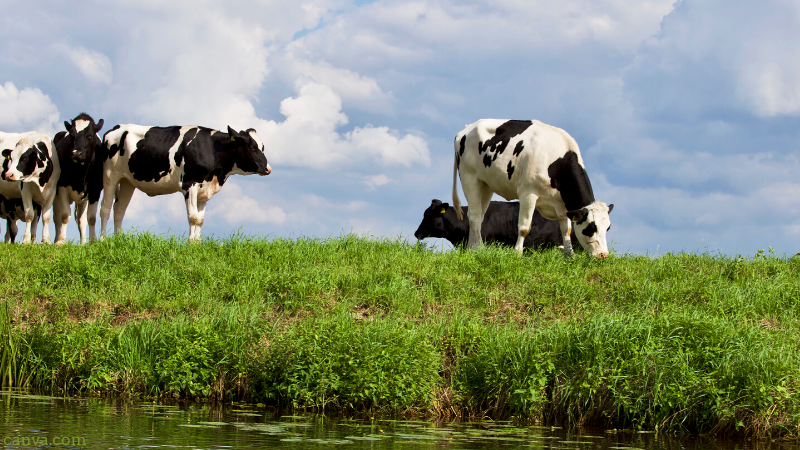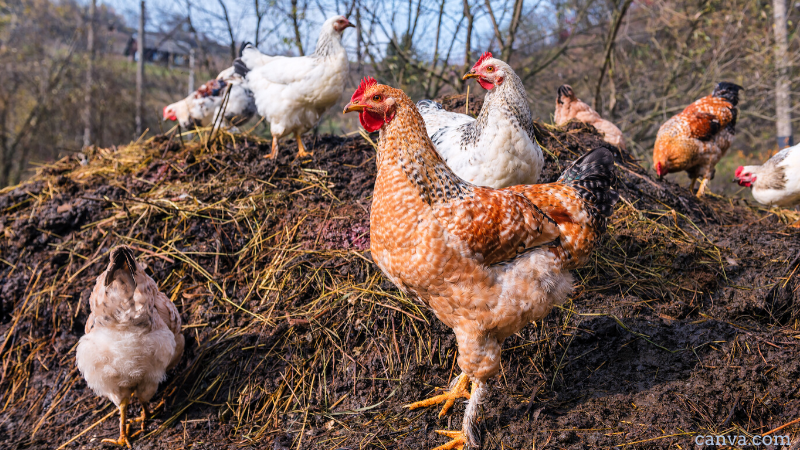Ed. note: This article first appeared on ARC2020.eu. ARC2020 is a platform for agri-food and rural actors working towards better food, farming, and rural policies for Europe.
Carbon farming is a new buzz word, hotly debated in the EU Commission, in European Ministries and Chambers of Agriculture, and the subject of numerous projects and movements. It is in fact proposed as an ecoscheme by the Commission. So far, however, there is no binding definition of “carbon farming” and there seem to be many different understandings of the term. What most approaches have in common is the objective of storing carbon in the soil in some way. Soil Scientist Dr. Andrea Beste unpacks some important points for this contested approach to soil and land management.
In 2018, the Land Use, Land Use Change and Forestry Regulation (LULUCF) [1] was adopted. Its commitments are to be included in the new EU energy and climate policy framework for the period of 2021 – 2030. The expectation is that this will contribute to the EU target of reducing greenhouse gas emissions by at least 55 percent by 2030 compared to 1990 levels. In this context, the EU Commission’s Farm to Fork Strategy supports CO2 certificates for agriculture.
In my opinion, this is neither constructive nor productive. When it comes to humus and soils, the focus must be on soil fertility, ecosystem services and greater resilience to climate change, and not on CO2 sequestration, certificate trading and carbon storage. Considering an isolated factor within an agricultural ecosystem in purely economic terms does not put enough value on ecosystem services and risks incentivising the adoption of one-sided measures.
The priority – Reducing GHG emissions in Agriculture
Bagged commercial fertiliser preparation
Some facts. The lion’s share of climate gasses in the atmosphere is caused by the extraction of fossil carbon deposits in solid or gaseous form (energy for industry, transport, heating, cooling, etc.). According to the IPCC report on land use and the World Agriculture Report [2] agriculture is both a driver of climate change as well as its dramatic victim. And, depending on the type of agricultural system, it has a crucial mitigation potential too.
Another fact is rarely discussed is that agriculture’s largest contribution to climate change stems from the production and application of synthetic nitrogen fertiliser [3]. By reducing the use of chemical fertilisers and substituting it with high-quality organic fertilisers, half of all agricultural greenhouse gas emissions could be prevented while simultaneously building humus.
Another major intervention point is the reduction of animal numbers, by linking animal numbers to the available acreage and promoting pasture grazing. Because of the humus stored underneath grasslands, this measure in particular would contribute to climate protection. Apart from soils in permafrost regions, peatlands and grasslands contain the largest part of the carbon stored in soils. Protecting these biomes must be a priority. Next to forests, grasslands are the largest biome on our planet and cover about 40 percent of the vegetated land area [4].
Ruminants are essential for the protection of grassland because only grazed grassland will persist and the more regularly it is grazed, the more humus is built up. Therefore, ruminants cannot just be evaluated according to their methane emissions: broaden the frame for the assessment and – compared with the use of chemical fertilisers – the balance shifts considerably; because ruminants are grazing, they are active climate protectors [5].
Healthy agricultural soils contribute substantially to the functioning of our ecosystems. What is needed are a high humus content and an active soil life. However, it cannot be the task of agriculture to “capture” greenhouse gases caused by industrial production and permanently store them in soils. An active soil life means humus is built but also always decomposed and transformed (processes that will also release CO2 as well). Soils are not suitable to serve as permanent storage for carbon sequestered from the air. That’s why, CO2 certificates are not the right instrument for agriculture.
Climate relevance of carbon sequestration in soils
During the 2015 UN climate conference in Paris, a global programme for humus building was initiated. The “4-Permille Initiative” (4 pour 1000) aims at an annual increase of carbon storage in soils by 4 permille. The assumption is that anthropogenic CO2 emissions could be offset almost completely.
No one will object to building humus in the world’s soils. With very few exceptions, and when done correctly, it will have a positive effect on soil structure and substance exchange. However, it is highly questionable to justify the necessity for more humus in soils by arguing that other industrial sectors should be exempted from doing their homework and reduce CO2 emissions. This line of argument reduces humus building to a tool in the CO2-certificate logic and that is not an expedient argument, at least not for agriculture. It does not do justice to the huge relevance humus building has for the maintenance of soil fertility, for soil eco-system services and for global food security. To ensure soil fertility, we need living soils with high biological activity and diversity – and this diversity would not exist without decomposition processes.
In 2012, the Federal Research Institute for Rural Areas, Forestry and Fisheries (Thünen) in Germany wrote in regard to the potential of carbon sequestration in soils for the purpose of climate protection:
“The additional storage of soil organic carbon in the course of sustainable humus management is generally limited in time and quantity because the humus reservoir develops a new equilibrium. Once soil management is changed again, even organic carbon that may have been stored for decades can be mineralised in a short time” [6].
The Thünen Institute draws the conclusion that building humus is important for soil fertility, erosion protection, groundwater formation and flood protection and it renders agriculture more climate resilient. But it is not suitable for CO2 certificates. This point is reiterated in the Thünen Institute’s 2018 response to the “4-Permille Initiative” [7].
“CO2 certificates for the sequestration of atmospheric carbon in soils: methods, measures and limitations” [8] is the title of a 2020 study within the “BonaRes”- project (soil as sustainable resource for the bio economy) funded by the German Federal Ministry of Research. It, too, highlights the limitations of CO2 certificate trading. Storage is subject to strong fluctuations, it is reversible, and measurement is difficult. At present, the authors of the study evaluate the instrument of CO2 certificates critically. Although they deem using good management practices to raise the carbon content in agricultural soils as positive in regard to agriculture and climate protection, they conclude that the instrument of private CO2 certificates may be unsuitable.
What is particularly important here is that an increase in soil carbon content is not necessarily synonymous with a sustainable agricultural model and the building of high-quality humus. Some measures can have a negative impact on soils or can introduce potential pollutants into soils (e.g. “biochar”). Therefore, a narrow focus on aspects of climate protection in agriculture can actually harm other environmental media [9]. The German Thünen Institute concluded in 2012:
“Climate change measures in agriculture should be implemented first in areas where large synergies with other environmental goals and environmental policies exist”.
No reason for “biochar” euphoria
The introduction of carbon into soils by means of pyrolysis carbon/“biochar” is much discussed in this context. Those lobbying for it say it is particularly stable and does not degrade so quickly. However, support for techniques that aim to store carbon in the soil for as long as possible while stabilising it against depletion overlook the fact that – at least in temperate climates – it is primarily soil life that is responsible for functioning ecosystem services of soils.
Only a high level of biological activity will result in good soil properties and healthy plant nutrition as well as biopores for water storage and purification. This active biology implicates in general a humus build-up but also a decomposition process [10]. Dead biochar, which delays the decomposition process does not support this high biological activity. The strong effects of charcoal in the so-called “Terra Preta” soils occur because tropical soils contain hardly any nutrient exchangers and humus formation is difficult. The situation in soils in temperate zones is completely different. And, without prior inoculation of the “biochar” with nutrients the strong nutrient storage capacity contributes to nutrient immobilisation, which is extremely counterproductive, especially in organic farming [11].
A critical meta-study reviewed a large number of publications (>300) and concluded that there is insufficient empirical evidence to support the potentials of plant carbon/”biochar” application in climate change mitigation [12]. To really have an impact on the climate, vast amounts of “biochar” would have to be applied. Numerical modelling showed that about 1 % of Germany’s greenhouse gas reduction target for 2030 could be achieved through the production of “biochar”. However, this would require all of the biomass available in Germany to be processed into “biochar” [13].
In terms of humus building and positive effects on soil ecology, the introduction of “biochar” into the soil is clearly inferior compared to techniques such as a balanced crop rotation with diverse and deep root penetration, permaculture, agroforestry, the recycling of organic matter through the application of solid manure, crop residues and compost [14}. All of these techniques have been tried and tested in agriculture for hundreds of years and organic farmers have optimised them further.
Again, a quote from the Thünen Institute for Agricultural Climate Protection from the 2018 soil condition report:
“Does the use of biochar have potential? Biochar from the process of pyrolysis proves to be highly stable in soils and could thus contribute to the stable fraction of permanent humus. With biochar, positive yield effects have so far only been demonstrated in nutrient-poor tropical soils, but not in the more nutrient-rich soils of temperate climate zones. Open questions remain, regarding the availability of suitable initial substrates for biochar, its pollutant content, profitability and the legal framework as well as the overall energetic and ecological assessment and currently they stand in the way of a positive evaluation of the use of biochar in our arable soils.”
Compost much more effective than “biochar”
The positive effect of carbon-rich fertilisers in the soil is highly dependent on the form in which the carbon is introduced into the soil. Not every organic fertiliser is suitable for soil life (for example, slurry or large amounts of fresh matter are not beneficial to soil life). Compost is particularly well suited to improve soil, increase its humus content and its fertility. And it is much more effective than “biochar”.
Several positive effects of compost (without “biochar” enrichment) on the soil have been well established for many years [15]:
- Increase of aggregate stability, improved soil structure
- Increase in pore volume with simultaneous improvement in water storage and filtration capacities
- Increased biological activity
- Increased humus content
- Reduced risk of erosion, flood protection
- Increase in mycorrhization and improved nutrient supply
- Reduced N leaching
- Improved disease resistance in crops
According to current knowledge, of this list, “biochar” provides at most 1-3 positive effects (results in the existing studies vary greatly [16]). So, if uncontaminated biomass is available, it is far more effective for soil and climate to use it for the production of quality compost rather than pyrolysis charcoal. Furthermore, in pyrolysed charcoal/”biochar” the pollutant potential persists. In pyrolysis technology, organic material is carbonised at temperatures of 350°C and oxygen contents of < 2%. The higher the temperatures, the more stable the carbon will be. Largely independent of the starting materials, a variety of aromatic organic substances will always be formed during the process of pyrolysis. Among them are a number of pollutants that are difficult to break down, such as polycyclic aromatic hydrocarbons (PAHs), which are carcinogenic and mutagenic [17]. Therefore, applying “biochar” includes a potential hazard to soils.
Regarding “biochar”, the report by the Expert Group for Technical Advice on Organic Production (EGTOP) at the EU Commission comes to the following conclusion:
“The principles of organic farming state that soil fertility should be based on a ‘living soil’, that means by enhancing soil microbial activity. Consequently, the majority of fertilisers used in organic farming are feeding soil micro-organisms. By contrast, biochar does not directly feed soil organisms. There are alternative ways of recycling organic materials, such as composting. If biochar were applied at a large scale (as it would be necessary for having an impact on climate), the use of biomass for biochar production would compete with the traditional uses of biomass (e.g. for composting) and other plant residues (straw), which are necessary for building up humus. The Group reports that composted material has beneficial effects on the soil, and in specific cases can be more effective in comparison with biochar.[18]”
A global market – with an eye on subsidies
The global “biochar” market is no longer about “pioneers”. In 2019 it had a turnover of 1 billion dollars and strong growth [19].
Involved are corporations such as Diacarbon Energy Agri-Tech Producers, Biochar Now, Carbon Gold, Kina, The Biochar Company, Swiss Biochar, GmbH, ElementC6, BioChar Products, Black Carbon, Cool Planet and Carbon Terra. And it is no longer just a question of residual materials. In the meantime, wood (not residues), maize and wheat are used as raw materials [20].
But production is very complex and expensive, which makes “biochar” unattractive to potential customers – farmers in particular. Therefore, subsidies for “carbon farming” would be ideal from the perspective of the corporations in the market.
We should not fall for the next greenwashing technology with high promises, which leads to funding being diverted away from holistic systems such as organic farming with many advantages in saving ecosystem services and shifted to technological pseudo-solutions such as the burial of “biochar” with a bunch of question marks about sustainability.
_____________________
[1] Regulation (EU) 2018/841 of the European Parliament and of the Council of 30 May 2018 on the inclusion of greenhouse gas emissions and removals from land use, land use change and forestry in the 2030 climate and energy framework, and amending Regulation (EU) No 525/2013 and Decision No 529/2013/EU
[2] IPCC (2000) Landuse, Landuse Change and Forestry.
International Assessment of Agricultural Knowledge, Science and Technology for Development (IAASTD) (2009): Agriculture at a Crossroads. Washington.
[3] Sutton, M., Howard, C. et al. (Eds.) (2011): The European Nitrogen Assessment: Sources, Effects and Policy Perspectives. Cambridge University Press.
[4] White R.P., Murray, S. and Rohweder, M. (2000) Pilot Analysis of Global Ecosystems: Grassland Ecosystems. World Resources Institute, Washington, DC,
[5] Beste, A.; Idel, A. (2019) The belief in technology and big data. The myth of climate smart agriculture – why less bad isn’t good
[6] Thünen-Institut (2012) Studie zur Vorbereitung einer effizienten und gut abgestimmten Klimaschutzpolitik für den Agrarsektor, Sonderheft 361
[7] Thünen-Institut (2018): Thünen Working Paper 112¸ Die 4-Promille-Initiative “Böden für Ernährungssicherung und Klima“ – Wissenschaftliche Bewertung und Diskussion möglicher Beiträge in Deutschland
[8] Wiesmeier, M. et al. (2020) CO2-Zertifikate für die Festlegung atmosphärischen Kohlenstoffs in Böden: Methoden, Maßnahmen und Grenzen, BonaRes Series 2020/1; DOI: 10.20387/bonares-f8t8-xz4h
[9] Beste, A.; Idel, A. (2019) The belief in technology and big data. The myth of climate smart agriculture – why less bad isn’t good.
[10] García, A. et al. (2014) Effects of Humic Materials on Plant Metabolism and Agricultural Productivity, Chapter 18. In: Emerging Technologies and Management of Crop Stress Tolerance, Academic Press
[11] Gul S and Whalen JK (2016) Biochemical cycling of nitrogen and phosphorus in biochar-amended soils. Soil Biology and Biochemistry. Elsevier Ltd 103: 1–15. Available at: http://dx.doi.org/10.1016/j.soilbio.2016.08.001.
[12] Gurwick, N.P. et al. (2013). A Systematic Review of Biochar Research, with a Focus on Its Stability in situ and Its Promise as a Climate Mitigation Strategy.
[13] Teichmann, I., 2014. Klimaschutz durch Biokohle in der deutschen Landwirtschaft: Potentiale und Kosten. DIW Wochenbericht Nr. 1+2.2014, 3-14.
[14] Diacono, M and Montemurro F. (2010) Long-term effects of organic amendments on soil fertility. A review. Agron Sustain Dev 3;
Ingham, E. (2006): How the soil food web and compost increase soil organic matter content.in Org.-Solut. Clim. Change 13;
Beste, A. and Faensen-Thiebes, A. (2015) Terra Preta / Pyrolysekohle. BUND – Einschätzung ihrer Umweltrelevanz.
[15] Beste, A. (2005) Landwirtschaftlicher Bodenschutz in der Praxis. Grundlagen, Analyse, Management. Erhaltung der Bodenfunktionen für gesunde Erträge und Klimaresilienz – Humusaufbau, Fruchtfolgegestaltung, Bodenbearbeitung;
BMLFUW, Österreich (2006) Evaluierung der nachhaltig positiven Wirkung von Kompost auf die Fruchtbarkeit und Produktivität von Böden; Adugna, G. (2016): A review on impact of compost on soil properties, water use and crop productivity. In: Agricultural Science Research Journal Vol.4; LTZ (2017) Sustainable Compost Application in Agriculture.
[16] Jeffery S., Verheijen F. G .A., van der Velde, M. and Bastos, A. C. (2011) A quantitative review of the effects of biochar application to soils on crop productivity using meta-analysis. Agriculture, Ecosystems and Environment. Elsevier B.V. 144(1): 175–187;
Wu H. et al. (2016) Responses of bacterial community and functional marker genes of nitrogen cycling to biochar, compost and combined amendments in soil. Applied Microbiology and Biotechnology. Applied Microbiology and Biotechnology 100(19): 8583–8591;
Ding Y. et al. (2016) Biochar to improve soil fertility. A review. Agronomy for Sustainable Development. Agronomy for Sustainable Development 36(2). Available at: http://dx.doi.org/10.1007/s13593-016-0372-z.
[17] Bucheli T., Hilber-Schöb I., Schmidt H. P. (2015) Polycyclic aromatic hydrocarbons and polychlorinated aromatic compounds in biochar. In: Lehmann J, Joseph S (Eds.), Biochar for Environmental Management. Earthscan, London, pp. 593–622.
De la Rosa JM et al (2019) Effect of pyrolysis conditions on the total contents of polycyclic aromatic hydrocarbons in biochars produced from organic residues: assessment of their hazard potential. Sci Total Environ 667:










